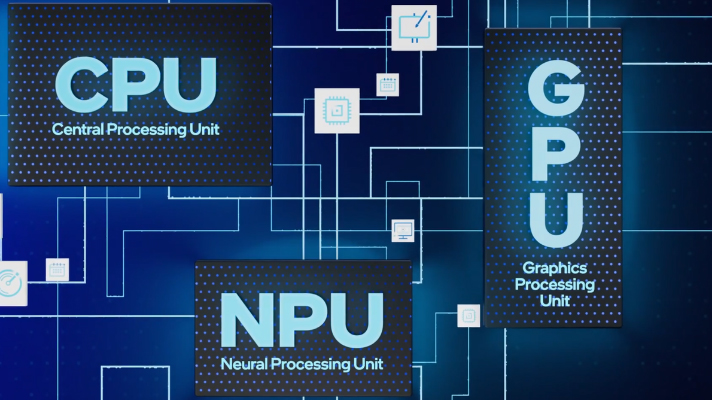|
The Main Brain: CPU (Central Processing Unit)
Think of the CPU as the general manager of your computer. It's responsible for handling most tasks you do every day, such as: Running your web browser, Opening and using word processing software, and Managing your email
CPUs are great at handling a variety of tasks one after another, but they're not the best at doing many similar tasks at the same time.
The Visual Wizard: GPU (Graphics Processing Unit
The GPU is like a team of artists working together. Initially designed for creating beautiful graphics, GPUs have found other uses too. They excel at: Making your games look amazing and run smoothly, Speeding up video editing, and Helping with certain scientific and mathematical tasks
GPUs are fantastic at doing many similar tasks at once, which is why they're great for creating complex visuals.
The AI Assistant: NPU (Neural Processing Unit
NPUs are the newcomers, specifically designed to help with artificial intelligence (AI) tasks. They're like having a specialized brain for things like: Recognizing faces in your photos, Powering voice assistants like Cortana, and Improving the quality of your smartphone camera
NPUs are super efficient at AI-related tasks, but they're not as versatile as CPUs or GPUs for other types of work.

How These "Brains" Affect Your Daily Life
While you might not think about these components often, they play a big role in your computer experience:
Smoother Gaming: Thanks to GPUs, your favorite games look better and run more smoothly.
Faster Photo and Video Editing: GPUs help speed up tasks like applying filters to photos or rendering videos.
Smarter Features: NPUs enable AI-powered features like better voice recognition and real-time language translation.
Improved Software:, Popular programs like Microsoft Word and Excel now use AI (powered by NPUs or GPUs) to offer features like: Smart formatting suggestions in Word, Automatic data insights in Excel, and Grammar checking that understands context
The Future is AI-Powered
As AI continues to grow, expect to see more features in your everyday software that make your life easier:
- Virtual assistants that better understand and help with your needs
- Photo and video editing tools that automatically enhance your media
- Improved computer security that learns to protect against new threats
While you don't need to know all the technical details, understanding these different "brains" can help you appreciate how your devices work to make your digital life smoother and more enjoyable.
Windows OS leverages AI technology in various ways to enhance user experience, improve system performance, and enable new features.
Here's a breakdown of some key areas where AI is applied:
1. Intelligent Personal Assistants: Cortana, Third-Party Assistants
2. Enhanced Search Functionality: Contextual Search, Predictive Search
3. Improved Security: Threat Detection, Phishing Prevention
4. Enhanced Accessibility: Captioning and Transcription, Adaptive Features
5. Optimized System Performance: Power Management, Resource Allocation
6. Enhanced Productivity Tools: Intelligent Document Formatting, Data Analysis and Visualization
Posted on: Aug 23 2024
|